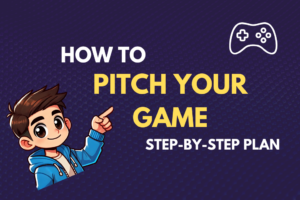As we discussed in How to Start Marketing Your Indie Game: A Step-by-Step Guide for Beginners, identifying your game’s core audience and defining a clear visual style are critical initial steps in indie game marketing. However, while many developers focus on the final stages of marketing, it’s crucial to begin nurturing a community from day one. As the experts at MIGS 2024 emphasized, “Marketing should be woven into the entire development journey, not just saved for the finish line“. This approach ensures that, by the time of launch, there’s already an engaged audience eagerly awaiting the game’s release. The following steps will guide you in creating a loyal player base from the ground up.
1. Identify Your Core Audience and Meet Them Where They Are
Understanding your target audience and knowing where they spend time online are the first steps to building a community. Indie game developers often create niche games that attract specific groups of players, so it’s essential to engage with those communities directly. For example, developers of strategy games might find their audience on forums dedicated to complex gameplay discussions, while casual game developers might look to more visually driven platforms like Instagram.
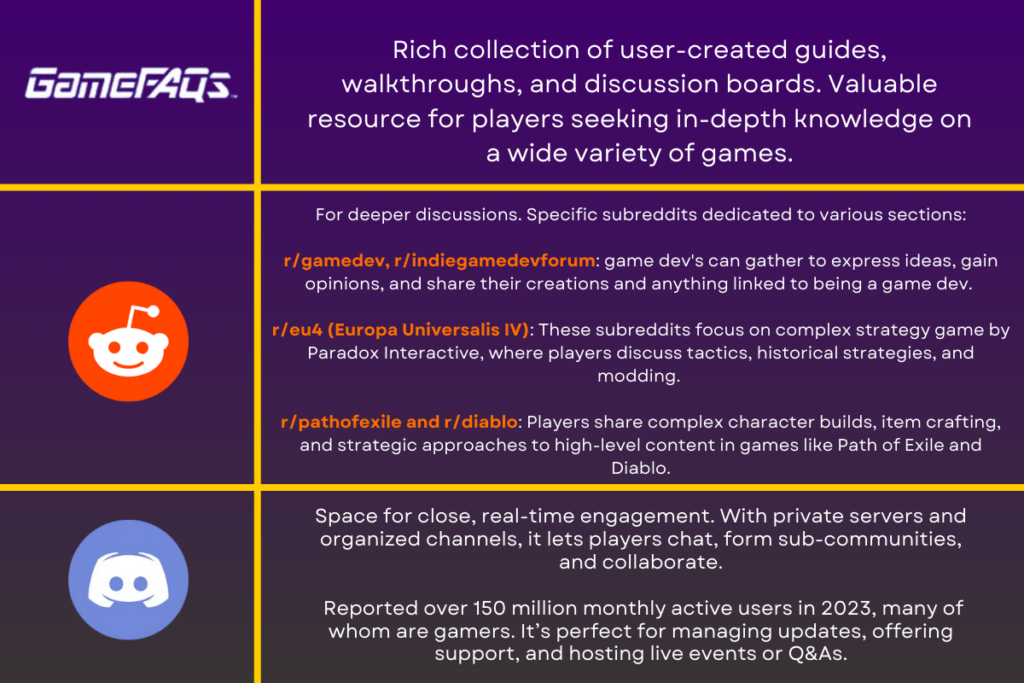
Tip: Start with one or two platforms where your audience is most active. Focus on building a meaningful presence there before expanding.
2. Choosing the Right Social Media Platforms for Your Game
Owned channels, such as your game’s social media accounts, blog, and email list, allow you to connect directly with your audience. These channels are perfect for sharing regular updates, behind-the-scenes content, and engaging with player feedback in real time.
To build a dedicated gaming community, it’s essential to select the platforms that best match your audience’s preferences. Not every social media platform is ideal for every type of game, so focus on where your players are most active.
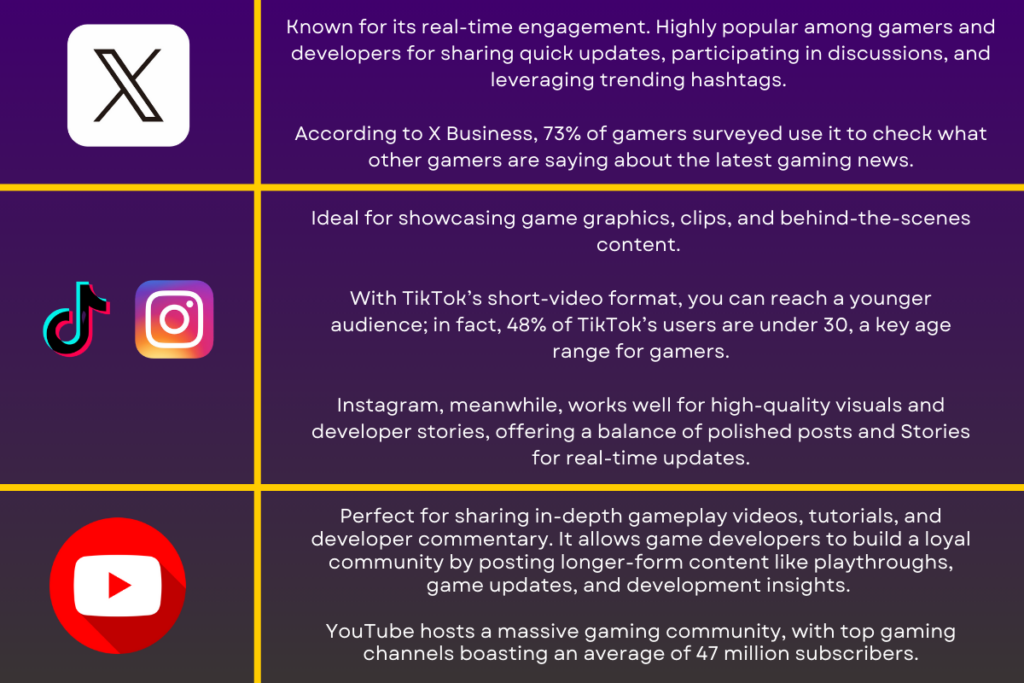
3. Foster Community Interaction Through Exclusive Content and Engagement
A loyal community thrives on engagement and connection. Providing exclusive content, early access, or regular updates can keep players engaged and make them feel like they’re part of the development journey.
- Behind-the-Scenes Content: Share stories about the game’s development process, design decisions, or challenges. This can be in the form of developer diaries, concept art, or short videos. There is a good example of The Last of Us behind-the-scenes content:
- Contests and Challenges: Encourage user-generated content by hosting fan art competitions, gameplay challenges, or in-game events that allow players to share their experiences with the community.
4. Collaborate with Influencers and Micro-Influencers
Partnering with influencers, especially those who have niche audiences, can help boost your game’s visibility. Micro-influencers, in particular, often have closer connections with their followers, which can lead to more meaningful engagement for indie games.
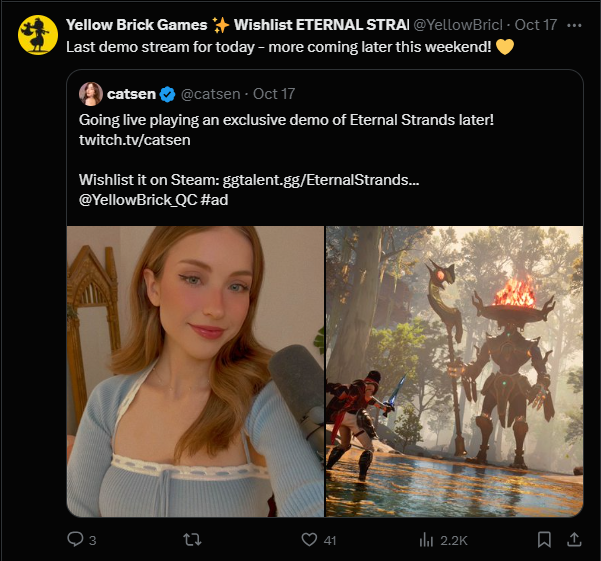
Example: If you’re promoting an indie game, collaborating with Twitch streamers who focus on horror games can be a powerful approach. Their audiences are highly engaged, drawn to the detailed commentary these influencers provide. Such streamers have loyal followers who actively seek out new horror experiences, making them ideal partners for showcasing your game to a dedicated community.
5. Encourage User-Generated Content (UGC)
User-generated content (UGC) helps expand a game’s reach while creating a more dynamic and engaging community. Encourage players to share their in-game achievements, fan art, or gameplay videos on social media. By recognizing and reposting this content, you show appreciation for your players’ creativity, which can strengthen their loyalty and inspire others to contribute.
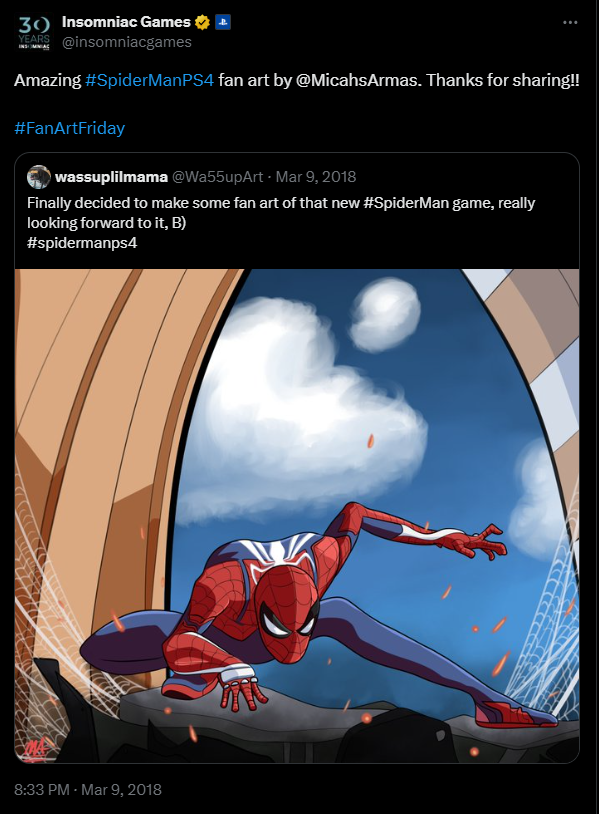
6. Host Live Events for Real-Time Interaction
Live streaming events on platforms like Twitch or YouTube allow you to interact with your community in real time. These can include gameplay sessions, Q&A events, or developer commentary. Live events not only provide engagement opportunities but also give you a chance to share the passion and personality behind the game, making the experience more memorable for players. For example, Nintendo regularly hosts Nintendo Direct live streams on YouTube, where they announce new games, updates, and provide developer commentary. These events include gameplay reveals and Q&A sessions, allowing fans to get a first look at upcoming content and feel connected to the brand. The streams are highly anticipated, with fans interacting through chat and social media.
7. Build a Moderation Team for a Positive Community Atmosphere
As your community grows, a moderation team can help maintain a positive and welcoming atmosphere. A well-moderated community encourages constructive interactions and keeps toxicity at bay. Set clear guidelines on respectful behavior and inclusivity to create a space where all players feel welcome.
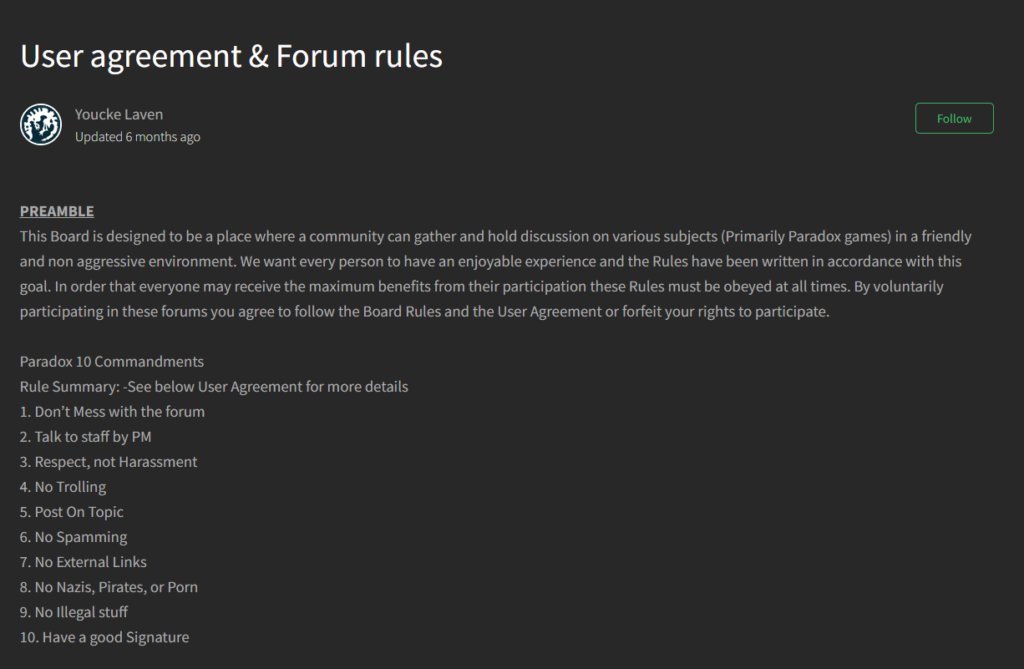
8. Use Data to Understand and Serve Your Community
Finally, track engagement metrics to understand which types of content resonate most with your community. For example, analyzing the performance of social media posts, live events, or UGC submissions can help you identify what keeps players coming back. Data-driven insights can also guide content planning and help you continuously improve the community experience.
Conclusion
Building a loyal player community is essential for the long-term success of any indie game. By focusing on engagement, fostering creativity, and creating spaces where players feel valued and respected, developers can build a dedicated fan base that goes beyond just playing the game. Hosting contests and challenges, collaborating with niche influencers, encouraging UGC, and organizing live events all provide valuable touchpoints that deepen players’ connection to your game and studio. Additionally, clear community guidelines and using data to understand your audience’s preferences can help create a positive atmosphere that keeps players coming back.
In the competitive world of game development, creating supportive community is a powerful marketing asset. By nurturing these relationships from the start and continuously engaging with your audience, you’re not only marketing your game, but also building a brand that players trust and genuinely love. Remember, a loyal community doesn’t just enhance the gaming experience. It becomes invaluable part of your game’s promotion journey and legacy!
